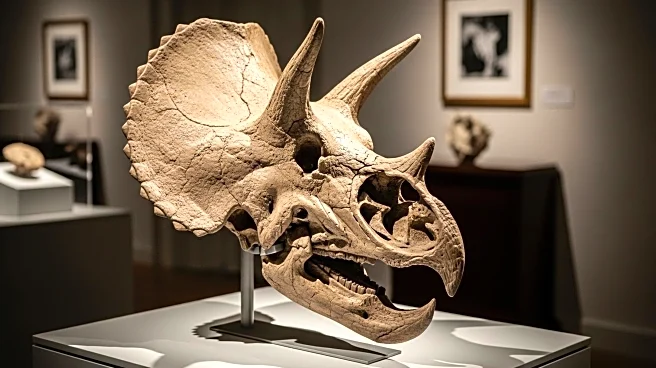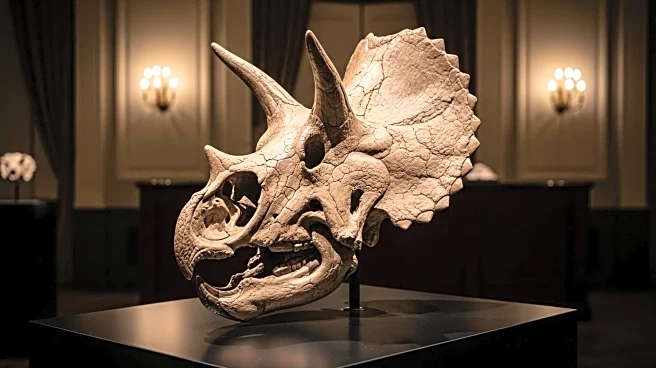What's Happening?
Phillips Auction House is set to sell a rare juvenile Triceratops fossil named Cera, estimated to fetch between $2.5 million and $3.5 million. This marks Phillips' first venture into the sale of dinosaur fossils, expanding its offerings beyond contemporary art. Cera, discovered in the Hell Creek Formation in South Dakota, is the first juvenile Triceratops ever uncovered, measuring 14 feet in length. The fossil is considered well-preserved, with two-thirds of the original skeleton intact, including key parts of its skull, vertebra column, and leg bones. The auction is scheduled for November 18, alongside other natural world specimens.
Why It's Important?
The sale of Cera represents a strategic move by Phillips to diversify its auction offerings amid a shrinking art market. Dinosaur fossils have shown resilience in the market, with previous sales achieving high prices, such as a juvenile Ceratosaurus fossil sold for $30.5 million at Sotheby's. Phillips aims to attract global collectors seeking rare and extraordinary objects that transcend traditional categories. This move could bolster Phillips' sales, which have declined by over 30% since 2022. The auction house's decision to include dinosaur fossils is a direct response to client demand for unique and awe-inspiring items.
What's Next?
Phillips' partnership with Christian Link, an art dealer and collector, suggests that more dinosaur fossils and natural history items may appear in future auctions. Link has previously sold a Tyrannosaurus rex skeleton outside the U.S. auction market and is guiding several intriguing lots to Phillips, including a gold nugget and other fossils. The success of Cera's sale could encourage Phillips to further explore this niche market, potentially leading to more collaborations and expanded offerings in the natural history category.
Beyond the Headlines
The inclusion of dinosaur fossils in art auctions highlights a growing trend of collectors seeking items that offer historical and scientific significance. This shift may influence the art market, encouraging auction houses to diversify their offerings and appeal to a broader audience. The sale of Cera also underscores the cultural fascination with dinosaurs, which continue to captivate the public's imagination and inspire interest in paleontology and natural history.











